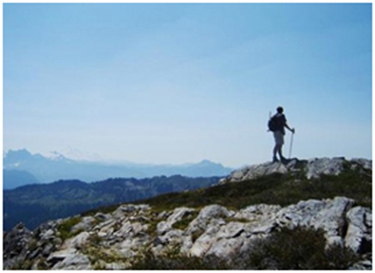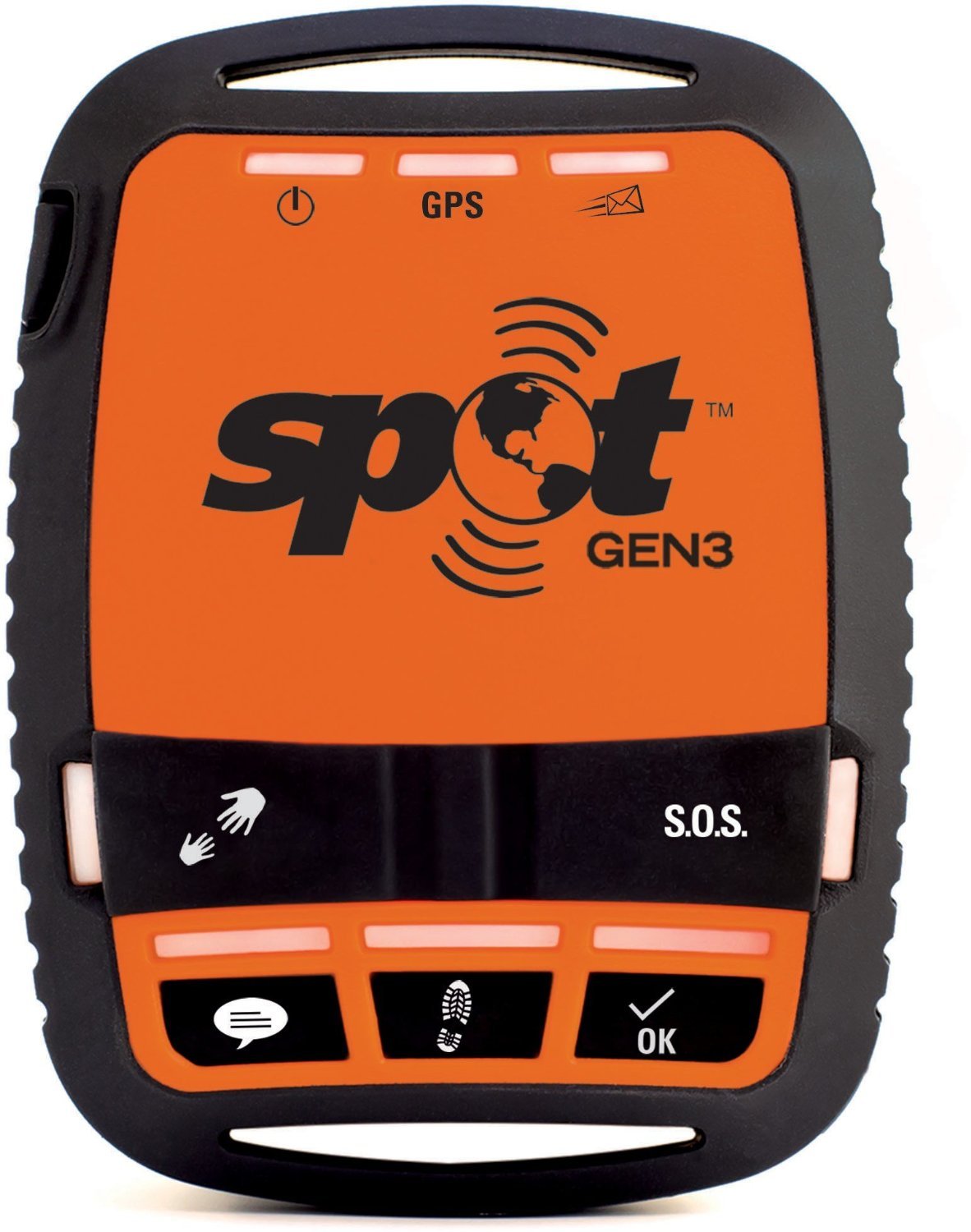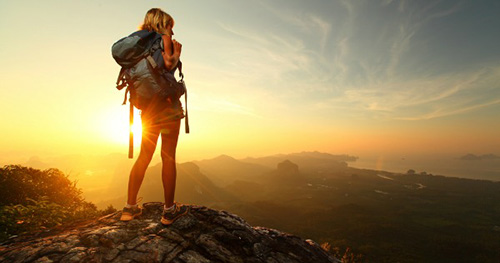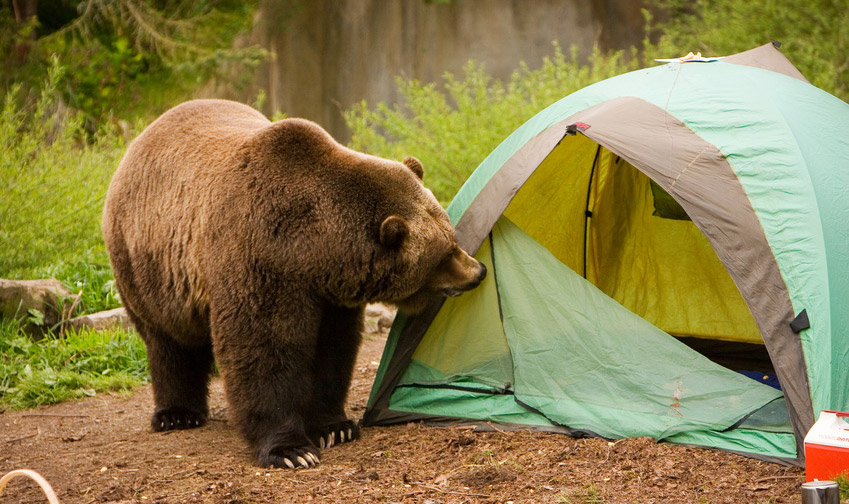Many people lament the idea of being alone. But do you know that solace and satisfaction as well as rejuvenation can also be found in solitude? Hiking in your lonesome, for instance, can bring so much joy and introspection. Solo hiking is not just about being able to go at your own pace or having to plan out a schedule all for yourself, it is more of a journey to your personal growth, of self-realization and of rebooting your body and mind to strengthen its resolve for the challenges ahead. While it is healthy for the body and mind, it is also crucial to consider safety and security.
To get you started, here are some tips for hiking solo that will always make your journey a safer and happier one.

Source : elseup.com
1. Start in an area familiar to you. It’s so exhilarating to imagine hiking along the Inca Trail in Peru or the Appalachian Trail. If you are wise, however, the safest place to start is somewhere near you and of which the terrain is familiar. Try a place you have gone with friends or family before– and you may just be surprised at the magnificence of the area without the usual distractions. This way you do not have to be anxious or worry about getting lost or getting stranded just in case something happens to you. Keep a watch for trail markers and remember to take pictures of any trail junctions or significant spots to help you remember which way you have come from when you are going back or retracing your steps.
2. Always have a personal tracker with you. You don’t need a shiny new gadget to keep others updated on your whereabouts. There are various apps nowadays that can be downloaded to your smartphone which allows to track your location even when off-grid. Think Sygic GPS Navigation, Navmii, CoPilot Premium, or Navigon. These apps can be downloaded to your Android or iPhone.
I would suggest carrying a personal locator with you even if you have smartphone-enabled GPS. Hiking GPS locators like SPOT and Delorme is known to save many lives every year.
These type of GPS locators have two main functions: a) to let your friends or relatives know that you need assistance, b) for sending SOS to contact 911 and other agencies in case of emergency.
 Spot-Satellite-GPS-Messenger-Orange | DeLorme-inReach-SE-Satellite-Tracker |
Truth is, if you have one of these GPS trackers/locators, you don’t need a cell phone. These location trackers are pocket-sized and stay connected wherever you go, and usually have long battery life. With such devices, your cell phone is likely to turn out to be an additional device that will be of not much use and take up space. These GPS trackers are a perfect choice for everyone right from beginner hikers, amateurs, and experienced thru-hikers.
3. Make sure to inform someone about your solo hiking escapade. Unless you don’t want to be found, it is crucial to inform someone of your whereabouts before you depart (and when you are back, too!) stating on the number of days that you will be out and your estimated day or time to be back. This point person or persons can help raise alarm signals when you’re not back on an intended date and can immediately inform authorities. Do remember to inform them about any changes to your itinerary. Lest you want to be subjected to a missing person operation even when you only decide to traverse a different trail.
4. Take time to visit the park’s ranger station and register. When hiking solo, always check your name into the logs and inform the authorities therein that you will be hiking alone. Park rangers also know the safest routes for solo hikers. Make sure to do a stopover or at the very least call for a check-out before you go home, too.
5. Be abreast with weekly weather conditions. Again, technology guarantees information is at your very fingertips. Have a weather bulletin lookout on your smartphone and check it each time you go for a hike. This is even more so when hiking in areas notorious for inclement weather conditions. As much as possible, bring a raincoat to protect you from getting wet when it suddenly rains on your hiking parade.
6. Keep a “bugout bag” handy. No matter how simple a trail, it is always wise to have the necessary supplies with you– water, rain cover, first aid kit, and energy bars. You’ll be sweating a lot thus, lowering your electrolyte level. So stay hydrated and warm. A map of the trail can also be handy if this is your first time.
And here are a few things you should double-check to ensure that you are carrying them:
- Extra batteries for thermometers, tonometers, and other digital devices
- Clear organization list of the items you are carrying.
- Properly written names of medications and their expiration date
7. Go for a busy trail. Just because you want to hike solo doesn’t mean, you no longer talk to people. Trails with high foot traffic means safety for you, too. Aside from being well-maintained, these trails allow you to easily shout for help whenever disaster strikes. Besides, you are not obliged to stop and talk to anyone you meet along the way. These people will also be panting for breath while hiking, you know.
8. Always stick to the path. It’s exciting to go on an adventure but when you’re alone, always be wary of wrong turns and the usual horror stories that go with them. Wandering off marked trail will only subject you to predators and unstable grounds. Aside from being illegal, it is dangerous and can turn deadly in a flash.
9. Always come prepared and to see your limits clearly. Do not just commit to a 10-mile hike when you can’t even go around the neighborhood block without panting for breath. Getting in shape prior to the hike is just as important as finding solitude in hiking on your own. So try to train for at least two months before going for it and to always know your limitations before you embark. Also, make sure that you have enough food and water to stay energized and hydrated just in case you have to extend your planned stay at a place. It goes without saying that you should bring along some basic first aid supplies, a headlamp, and an extra layer of clothing so you are prepared just in case the weather changes.
10. Listen to your inner voice. Be wary of the dangers in the wild and of predators with two feet. Yes, it’s okay to look risks in the eye but when the moment spells disaster, decide to look away. Life is precious and there are other hiking adventures to seize.

Source : coachingtocomealive.com
10 Additional Tips For Female Solo Hikers
1) Adjust your appearance and lifestyle for long-distance hiking
For example, if you are a female thru-hikers with long hairs, it is advisable to cut your hair short before hiking. It will make you more comfortable as you won’t notice or have to pay attention when it’s dirty. It will not become a tangled mess in strong winds.
Another important tip is to get used to wearing a backpack. Instead of using stylish bags or purses in your daily life, start wearing a backpack. You may find it may be uncomfortable even when it weighs only a couple of kilograms. So as you start wearing more, you’ll build up strength.
2) Take your dog with you for a solo hike
If you are apprehensive about your first solo hike take your four-legged best friend to make you feel confident on the trail. If you’re worried about running into the wrong type of people with bad intentions on the trail., your dog will give you courage. Besides it will also guard your gear and camp food just in case someone wants to steal it. Taking your dog with you will make you more independent and strong.
3) Follow woman hiking blogs
There are hundreds of them who have shared their solo thru-hiking experience and travel secrets online.
Following these blogs will inspire you and give you confidence, to gear up. Here are some blogs you may follow:
4) Learn to identify common animal tracks
Learning how to distinguish animal tracks doesn’t take much time but could save your life.
On the Nature Tracking website, you will find dozens of pictures of animal tracks. By going through these examples and studying them, you’ll learn to identify bears, coyotes, foxes, cougars, skunks, raccoons, and much more.
Here’s an infographic that you can download on your phone. It will help you distinguish dangerous animals by their tracks:

Source: hikeandcycle.com
5) Never cook near your camp.
If you’re going for an overnight hike, and need to cook your food, never do it just before you are about to seep. Prepare all your food at least a mile away from your campground. Your dog can be a very useful companion in this matter. Do not spend the night in a place where you cook. This is the safety precaution to take to stay safe from uninvited wild guests.
It is also recommended not to eat at your camp. Food smells can attract wild creatures, so be careful.

Source: hikeandcycle.com
6. Don’t be creeped out by other hikers.
Hiking solo for the first time with no one around can be a bit unsettling. But in general, there are much fewer risks than your mind may want you to think, especially from other hikers.
It is understandable that a woman traveling alone often get anxious when meeting other hikers, especially if it’s a group of male travelers.
Most of the time, when these other hikers start talking to them, the female backpackers feel at ease and don’t usually have a reason to panic. Plus you can always say a couple of words to each other and then go your separate ways.
7. Do not announce your coordinates on social media.
Yes, you are excited about your future solo hike and would like to share and talk about it. But honestly speaking, sharing your exact location on the web isn’t the smartest idea. So if you want to share your beautiful hiking photos on Instagram or Facebook, wait till you are several hours away from the spot before you post them online. Do not share your route with strangers only exception being the park rangers—always make them aware of your destinations.
8. If you need to hitchhike, choose wisely.
While thru-hiking you may need to catch a ride. It’s best if you can join other hikers from your trail. That way there can even a small chance you’ll find other solo ladies.
When traveling alone as a female, pay close attention to drivers before you ask for a hitchhike. The best option is to get a ride with other travelers who are going to camp or spend time on a trail. Also, as an alone lady, you will get more chances to hitchhike with a traveling family which by far is the safest option.
9. Text friends or relatives if you meet other people on the trail.
It’s a good idea if you are hitchhiking with strangers. Call a friend or text the name of the people you are traveling with, what car they and the destination you are going to.
If possible, send a couple of photos if the internet connection allows.
10. Trust Your Instinct.
Any lady traveling together or alone should always trust their instincts. In case a person seems suspicious, be alert and leave the space as soon as you can. In your travel, if you come across something that doesn’t seem right, don’t take that path or return home. If your gut feeling is telling you to finish your journey, don’t waste time delaying your decision.
Remember, this has nothing to do with your strength as a woman or independence —your instincts and experience are all you have in the wild, so better learn to trust them.
Take these tips for hiking solo to heart and you will definitely enjoy each moment of being alone but not lonely whenever, wherever. Tag a video-camera along to help recount precious memories along the way for everyone to see how hiking and independence can bring more introspection on oneself.
Definitely, hiking solo is so much better than yoga or meditation in the journey towards finding solitude and yourself.

